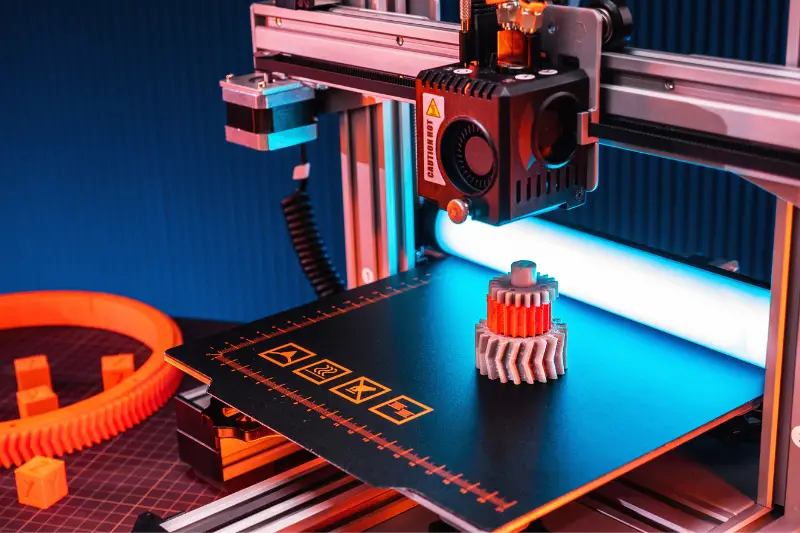Click here to get this post in PDF
What materials does 3d printing use? There are many kinds of materials that can be used in additive manufacturing and all the different ones have their own specific purposes and features. The three main kinds are the most common, but they are also the most expensive. They are the most common ones as well because they are cheap, easily available, and very compatible with various printing processes.
Additive Manufacturing is simply the manufacturing method by which 3D printed objects are produced. It includes the production of 3D objects from the simple addition of a single or multiple materials layer by layer onto other layers. This can be done with plastics, metals, glass, composites, and ceramics – all types of materials that can be applied directly to any surface without the need for additional equipment.
One of the main differences between polyjet and inkjet printing is their method of heating. Polyjet printers heat parts of the material using an electrical current. The ink is first applied in a jet nozzle on these areas, and then it is automatically transferred to the areas where it needs to be printed on. The heat melts the ink, and the plastic melts into the appropriate place. This kind of additive manufacturing is known to be very expensive because the heat that is used has to be very precise, or the object might even miss the targeted areas. It’s commonly used by some of the best 3d printing companies in Los Angeles specifically for the movie business. On the other hand, polyjet machinery uses heat-treating methods that are a lot less precise, which makes it cheaper.
Aside from the main differences between polyjet and inkjet printers, there are also some minor differences. This is mostly because of the type of material that is used for 3d printing. When polyjet printers are used, they usually use high-quality resins that are resistant to abrasion and corrosion. These resins are usually thicker than those used by most inkjet manufacturers, which allows them to create more filaments per piece. Since they are thicker, the filaments produced by these machines are also stronger and of a higher quality.
One of the most common 3d models used today is a simple plastic filament. These consist of a solid color and a patterned material that is glued onto the top of a solid core. There are various brands available depending on the amount of detail that you want to achieve with your model. Some of these patterns can be printed through the nozzle, while others have to be done manually through the pla filament’s feeder. For intricate details, the feeder must be manually emptied before the pla filament is loaded again. After the initial cleaning and drying, your model should be ready for some paint spraying.
The most common materials in 3d printing are UV markers, clear coat, heat shrink wrap, metallic decals, polyurethane decals, UV coating, clear polyester and UV badge materials. UV markers are used in order to create UV images that can be seen from a specific angle or printed directly onto the material. The UV images can also be created using a hand stamp style machine, making them extremely versatile. Marking is a critical step in the manufacturing process because it enables production managers to find flaws and other problems early in the process. Clear coat is applied to objects during the manufacturing process, preventing damage and deterioration to the image during the finishing process. It also helps to protect the image from further harm during shipping and delivery.
Polyurethane decals are a new generation additive that allows for very smooth and detailed 3d prints. This type of additive uses a liquid polymer to create a hard surface that is highly flexible and safe to work with. As with other types of polyurethane, the surface can be formed into detailed designs by using a rotary tool. Heat shrink wrap is a popular option for finishing surface material, as it provides a lightweight application and high resistance to changes in temperature. Most companies will use a combination of these three during the production process to achieve the most accurate and beautiful images possible.
The final step in the printing process is to apply UV and clear coat effects to your object. Depending on your printer and photo processing software, this might be accomplished in a few different ways. Some printers will automatically apply UV filters to all of the layers of your 3d print, while others will apply them to each individual flat surface. If you are printing your object using a software program, simply select the appropriate UV mode and select the appropriate color from the existing colors palette. If you are printing your object in a software program designed specifically for flat surface printing, the effect layers will be automatically applied when the software starts up.
You may also like: 3D Texturing
Image source; stock.adobe.com

